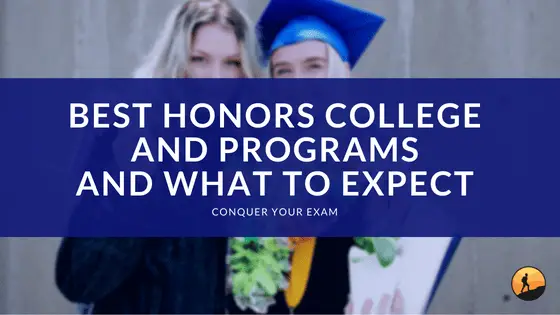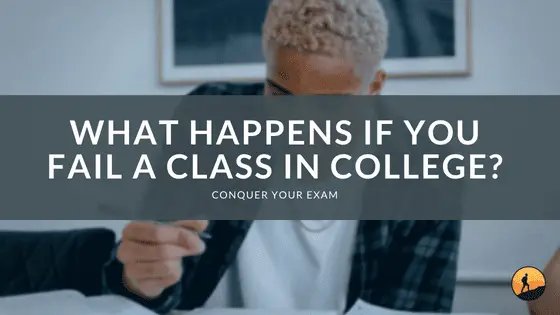With online learning came a myriad of other learning methods. Hence, the term ‘diverse learners’ resonates more than ever. With a global classroom that comprises students from different backgrounds, educators have a challenge to face. That is the challenge of producing content that resonates with every individual.
At the crux of this challenge lies multimodal learning, a novel approach that integrates various modes of expression and engagement. You can leverage these modes, and educators can create more affluent and inclusive learning environments by understanding them. Hence, this article delves into multimodal learning, its benefits, and practical tips for using it.
 What is Multimodal Learning?
What is Multimodal Learning?
What is multimodal learning? It is a means of education that engages more than one sense. It refers to the instructional approach that combines various means of expression and representation to facilitate a more comprehensive learning experience.
In essence, multimodal learning theory recognizes that students differ in how they best perceive and process information. Hence, it allows people to benefit from multiple content delivery and interaction avenues.
There are four modes of representation which are visual, auditory, kinesthetic, and textual. We will further discuss those in the section below.
However, we will first discuss the modes of expression: how learners demonstrate understanding of content. They are divided into three sections, which are:
- Written expression. Essays, reports, journals, and other forms of writing allow learners to articulate their understanding and perspectives.
- Oral expression. Oral presentations, discussions, and debates enable learners to communicate their knowledge verbally.
- Artistic expression. Projects, drawings, music compositions, and other creative projects can be invaluable. It best works for those who find it best to communicate creatively.
There are also different modes of engagement within multimodal learning. This encapsulates how learners interact with content, and it also encompasses three distinct methods of engagement:
- Collaborative. Working in groups or teams can foster a more profound understanding as learners exchange ideas and work together on solutions.
- Individual. Some learners prefer self-paced study or reflection. Hence, they find more value in independent project work.
- Experiential. Field trips, internships, or real-world applications of knowledge can provide incredible experiences that cement learning.
Types of Multimodal Learning
Multimodal learning style is an integrative approach employing various instructional methods. As discussed earlier, they cater to different learning styles. Each process works differently and resonates with diverse learners. Hence, it recognizes the fact that people have varied ways of absorbing and retaining information.
There are four main types of multimodal learning, known as the VARK model. VARK stands for Visual, Auditory, Reading, and Kinesthetic. However, there are also four other types that have gained popularity. These are further discussed below.
Visual Learning
Visual learners absorb information by viewing images, graphs, or diagrams. The style emphasizes the use of sight to gather and interpret information. That includes infographics, slideshows, mind maps, and flashcards. This method helps learners conceptualize complex ideas through visual representation, which aids in recall and understanding.
Auditory Learning
Auditory learning is when you learn most by hearing information or listening to someone. This includes lectures, audio recordings, podcasts, music, and group discussions. This is most effective for those who retain data when they hear it. This method can also enhance verbal skills and auditory memory.
Kinesthetic or Tactile Learning
Kinesthetic learning involves learning through physical movement, hands-on experience, and the sense of touch. Hence, this encompasses experiments, role-playing, physical games, and field trips. This aims to engage learners actively in the learning process, prompting retention through action and experience.
Read/Write Learning
Read and write learning prioritizes information displayed as words, emphasizing reading and writing. This includes working on books, articles, essays, lists, and written reports. This technique strengthens linguistic skills and is particularly useful for learners who excel in absorbing textual information.
Collaborative Learning
Collaborative learning is achieved through group activities and discussions. For example, it includes group projects, team presentations, brainstorming sessions, and peer teaching. This method fosters teamwork, enhances communication skills, and allows learners to benefit from diverse perspectives.
Solo or Individual Learning
Sometimes, you might simply prefer studying on your own, which is known as self-paced or independent study. This includes personal reading, reflection, online courses, and self-assessment. It allows you to move at your own pace, focusing on individual strengths and areas of improvement.
Digital or Technology-Driven Learning
Consider utilizing digital tools and platforms for instructional delivery, which might just be your ultimate way of learning. This includes online courses, educational software, and simulations. Some of its benefits include its flexibility and access to a rich multimedia experience.
Blended Learning
Blended learning refers to combining traditional face-to-face instruction with online or digital means. The ultimate way to accomplish this is through classroom sessions complemented by online modules, discussions, or assignments.
What are Some Benefits of Multimodal Learning?
The benefits of multimodal learning are wide and varied. As they acknowledge people have unique abilities and different approaches to education, they offer a diverse and adaptable approach to education. Hence, the approach presents a host of benefits, including the ones discussed below:
- Improved retention and recall. Learners engaging in varied ways deepens their cognitive processing and reinforces their understanding.
- Catering to diverse learning styles. Presenting information in various formats ensures that everyone is involved in the learning process, regardless of their ideal learning style.
- Enhanced engagement. Interactive and diverse activities can make the learning experience more enjoyable and immersive.
- Inclusivity. Multimodal learning can be especially beneficial for students with disabilities or those who have specific learning needs.
- Flexibility. You can have the autonomy to choose or lean into the mode that suits you best at any given time.
- Better preparation for real-world challenges. By getting exposed to various formats and methods of learning, you become better equipped to handle diverse situations.
- Enhancing critical thinking. Interacting with content through different lenses encourages learners to think more deeply about topics and compare and contrast information.
- Continuous feedback and adaptation. With various modes in play, educators can receive feedback from multiple sources. This diversity in feedback allows for better assessment and adaptation to instructional strategies.
Examples of Multimodal Learning Activities
Multimodal learning examples allow you as a learner to explore novel means of enhancing your educational journey. Educators can also utilize this list to explore ways to spice up things in the classroom. Below are some examples divided according to the mode of learning.
Visual Activities
Some examples of visual activities, ones that engage your visual senses, include:
- Infographics: Create or analyze infographics to summarize and visualize complex information.
- Mind mapping: use tools such as MindMeister or hand-drawn methods to represent ideas visually.
- Video analysis: watch educational videos and analyze or discuss their content.
Auditory Activities
If you’re more of a listening and hearing person, then these activities are for you:
- Podcast creation: If you’re an educator, allow students to research a topic and present it as a podcast episode.
- Musical parodies: Rewrite popular song lyrics to explain concepts or tell historical events.
- Listen and summarize: Play audio clips and have students summarize or ask questions about the content.
Kinesthetic and Tactile Activities
Engage your sense of touch as one of the multimodal learners through those activities:
- Role-playing: Act out historical events, scientific processes, or literary scenes.
- Model building: Construct models of molecules, architectural structures, or ecosystems.
- Interactive games: Use board games or physical activities to reinforce concepts such as vocabulary relay races.
Read and Write Activities
Sometimes, reading and writing are the best means of tackling a learning task. Some examples include:
- Essay writing: Write essays or reports on specific topics to deepen your understanding of the subject.
- Journaling: Maintain a reflective journal to encourage introspection and text-based expression.
- Annotated reading: Read articles or literature and annotate notes, questions, and highlights.
15 Helpful Multimodal Learning Strategies
By integrating the multimodal learning strategies discussed in this section, educators can create more engaging and inclusive content to engage their learners. These strategies aim to provide diverse pathways to acquiring and demonstrating knowledge, catering to a wide range of learner preferences. Here are the top 15 strategies you can integrate into your education as a learner or educator.
For Auditory Learners
As discussed earlier, auditory learners absorb information when they hear it. Their learning is enhanced by verbal lectures, discussions, and listening to themselves or others. Some strategies for auditory learners include:
- Rhymes and mnemonics: Creating catchy rhymes or mnemonic devices can help auditory learners remember complex sequences or concepts. For example, the rhyme “In fourteen hundred ninety-two, Colombus sailed the ocean blue” aids in recalling the year Columbus discovered America.
- Audiobooks and book summaries: Consider replacing or supplementing your traditional reading with audio versions. This can help you retain better information.
- Music integration: Transform your lessons into songs or use background music that reflects the studied topic. This can make the learning process more memorable through the power of music.
For Visual Learners
Visual learners process and retain information better when they can see it. They benefit from diagrams, charts, symbols, and other graphic elements. The strategies for visual learners include:
- Flowcharts: For visual learners, tracing a sequence or process visually can make abstract or complex ideas much more precise. For instance, when studying computer algorithms, flowcharts can provide clarity.
- Color coding: By assigning different colors to various topics, themes, or categories, visual learners can quickly identify and categorize information. This comes especially helpful in subjects like biology, where different systems or species can be color-coded.
- Flashcards with images: Adding relevant photos or diagrams to flashcards can be especially beneficial, as it eliminates the mere act of reading and turns it into an association of visual cues.
- Interactive software: Tools like Prezi or other dynamic presentation software offer zooming, panning, and motion. These added elements keep you engaged, making absorbing information much more natural and fun.
For Reading and Writing Learners
Do you belong to the group that prefers a more structured approach? Maybe you prefer textual information, one that often comes in sequential formats. Well, if so, these are the strategies to employ:
- Summarization: Condense lengthy texts or lectures into concise summaries, as they allow you to process and internalize the information. This reinforces the material and sharpens your skills in identifying the main ideas.
- Analogies and paraphrasing: Rephrasing complex topics in simpler terms or drawing parallels between known and new concepts aids understanding. For instance, comparing the structure of an atom to our solar system can make it more relatable and easier to grasp.
- Blogging: Blogging involves research, structure, and articulation. This process reinforces learning, while feedback from readers can offer new perspectives or clarify doubts.
- Annotated bibliographies: Beyond listing sources, annotating them requires an understanding of the material’s essence. This method ensures you do not only read but also critically evaluate and summarize your readings.
Kinesthetic Learners
Kinesthetic learners are those who operate through touch, move, and do. Some of the strategies these learners can utilize include:
- Drama and Skits: Turning a lesson into a short play can help kinesthetic learners understand and remember content.
- Field Work: Field trips or outdoor explorations can be invaluable for subjects like geography or biology.
- Physical Models: Building physical models, like constructing DNA helix models in biology, can aid in visualizing and understanding abstract concepts.
- Gesture-Based Learning: Using hand or body gestures to symbolize concepts can be particularly effective. For instance, gestures can be used to depict words or phrases in learning a new language, making them easier to remember.
Wrapping Things Up: Effective Multimodal Learning Strategies for Diverse Learners
In today’s digital education era, meeting the needs of a global classroom is both an opportunity and a challenge. Hence, multimodal learning stands out as a solution, providing various ways to learn and express understanding. The four modes that stand out represent the VARK model, which stands for Visual, Auditory, Reading/Writing, and Kinesthetic.
This approach acknowledges individual learning styles, promoting improved retention, inclusivity, and engagement. By embracing multimodal strategies, educators can cater to diverse learners, ensuring everyone feels recognized and valued in their educational journey.

 What is Multimodal Learning?
What is Multimodal Learning?






